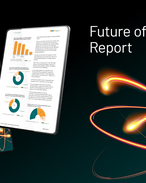In light of the terrorism warning for Australia and the government response of vigilance being the key to countering the terrorist threat, many petroleum companies are asking what vigilance exactly means, and what precisely they should we be doing? This article provides a better understanding of dealing with the risks that terrorism poses for offshore operators.
Millions of years of accumulated and untapped muck between the Asian and European tectonic plates continue to dominate the spectrum of conflict. Furthermore increasing acts of maritime and suicide terrorism are a cause for concern by prudent operators in all parts of the globe.
The assessment of such acts is complex, and the hydrocarbon sector is not used to low-probability events such as suicide terrorism. In addition to formulae to support operational hazard management, there is need for similar formulae to give an answer to outrage risk assessments of potential security disasters.
Most oil companies are familiar with overt assessments of consequence and likelihood, qualitative risk assessments. However, with security issues one needs to look at threat a little differently as the threat of an event is different to the potential of an event. When looking at terrorist threats, assessors need to think in terms of the terrorist's intent and capability.
Intent in turn requires an assessment of both the terrorist's desire and expectation, while capability is a combination of the terrorist's resources and knowledge. The combination of capability and intent is expressed as high, medium, low or insignificant as shown in this matrix.
It can be difficult to assess intent and capability when the terrorist functions from underground cells and is unpredictable at best. This restriction limits assessor to look at the vulnerability of assets in isolation. However this is what a saboteur does when they are analysing a target within a target system. Saboteur terrorists will use something like the CARVER acronym, and offshore operators will find this acronym useful in assessing threats to assets within their responsibility, particularly if they do not have access to classified reporting. When looked at through the eyes of the adversary, the threat can become a little clearer, and in determining how much security is enough, a CARVER assessment can be used to look at the offshore facility from a terrorist viewpoint.
· C is criticality or relative importance. What part of your field is most critical? For example a terrorist may seek to destroy the product storage facility in additional to helicopter assets to achieve maximum outage.
· A is for accessibility or ease of access. Just getting to the target can be confusing at best in the middle of the night; so easy access targets are often preferred.
· R is recoverability and how easily the asset can be repaired, replaced or brought back on line. This downtime thinking may indicate a further threat to repair and spare parts facilities, as a terrorist will seek maximum bang for buck.
· V is for vulnerability and the ease with which people and infrastructure can be put out of action with a hammer or a spanner. Martyrs are just as scared as anyone else when it comes to delivering the final blow, even with the motivation of 70 virgins and a place in heaven. All terrorists will look for the easier way. For example, the Bali bombing is alleged to have only costed the terrorists about $30,000.
· E is for effect. Terrorists will concentrate on targets that will cause the greatest adverse effect on the population, such as could be caused by a coastal oil spill off the pristine Spanish coast. Suicide terrorists favour spectacular attacks that have high symbolic value, cause mass casualties, and severe damage to the economy.
· R is for recognition and answering the what is it, and the what, where type questions? It is the ability to actually to identify one target from another. The effect of their action will be minimised and even counter-productive to the terrorist planners' objective if the wrong target is hit, but note that not all local terrorists are as smart as Osama bin Ladin, and some attacks may not be logical.
Just as companies are humanizing safety to overcome cost centre mentality in the drive towards zero-incidents, so to security must be humanised. In this respect, offshore operators need to consider what is the difference between a good level of security and a bad level of security. In simple terms, bad security eats you, but good security feeds you. The best money is money that makes you more money, and so security needs to be viewed as a contributor to profit, and not as a cost centre.
Offshore operators must consider the installation of duress beacons in all control rooms, as invariably there will be no time to act. Access from the sea must be denied by bolting deck hatches. Electronic surveillance is not failsafe, and 24-hour eyeball surveillance is the only answer if there is any suspicion whatsoever. When the worst happens the Emergency Response plan becomes null and void, and it is an individual decision to abandon the platform.
While the government only identifies about six vital national assets, the same thinking can be applied by petroleum companies to the lowest level in the field. Although there is always an element of unpredictably in dealing with terrorists who plan and act beyond normal and rational thought, thinking from the terrorists' side can be a powerful mechanism for the hydrocarbon sector.
Authors' note: Jim Truscott is the Principal of JTA Crisis Practitioners based in Perth. He has been a crisis practitioner for over 20 years, initially in the SAS where he was intimately involved in resolving crises in Papua New Guinea, Cambodia, Iraq, Indonesia, East Timor, the Sydney Olympics, the Solomon Islands, Bougainville and the Southern Ocean, and now in business where he gets involved with maggots in nursing homes in Australia, fires on gas platforms in the South China Sea, anchor drags on subsea pipelines in the Straits of Singapore, kidnappings in Sumatra, threats to gold mining in Kalimantan, and ships of shame off the Australian coast to name but a few scenarios. It is Jim's experience in planning strategy in boardrooms and concurrently managing emergencies in operations rooms that is captured in this article. Peter Hill has five years offshore oil and gas experience, and a military background. He has worked in Australia, Vietnam, Japan, UK, South Africa, Papua New Guinea, and Brunei and now as a safety and risk analyst with DOIR. He is completing his Masters thesis on crisis management at the University of Western Australia. Peter has previously consulted with JTA.
























